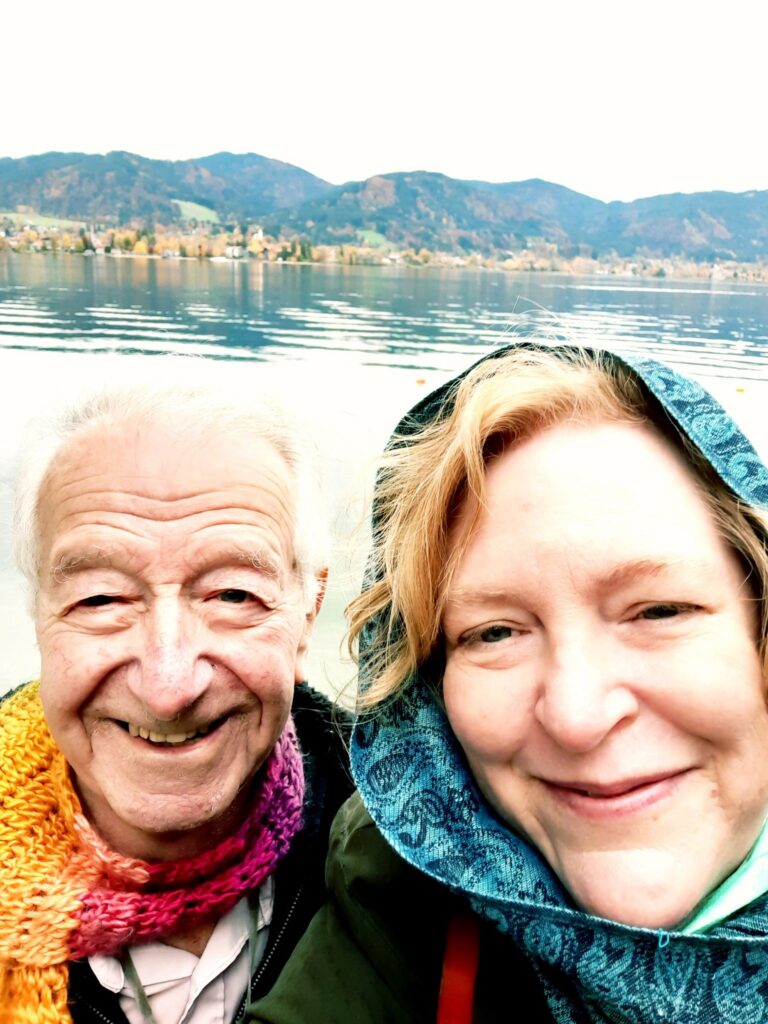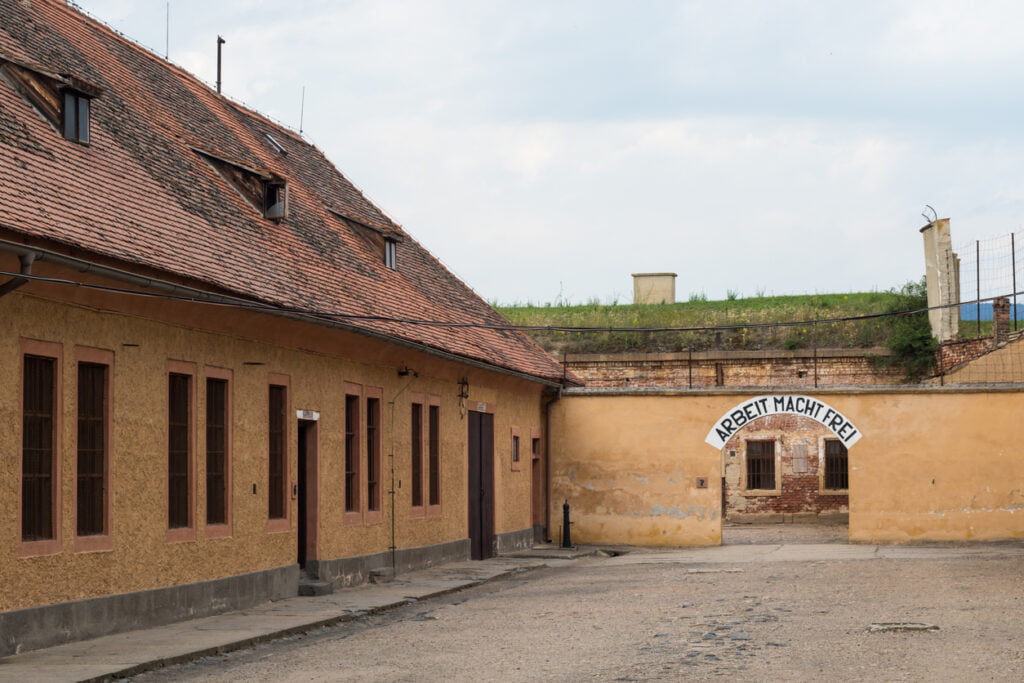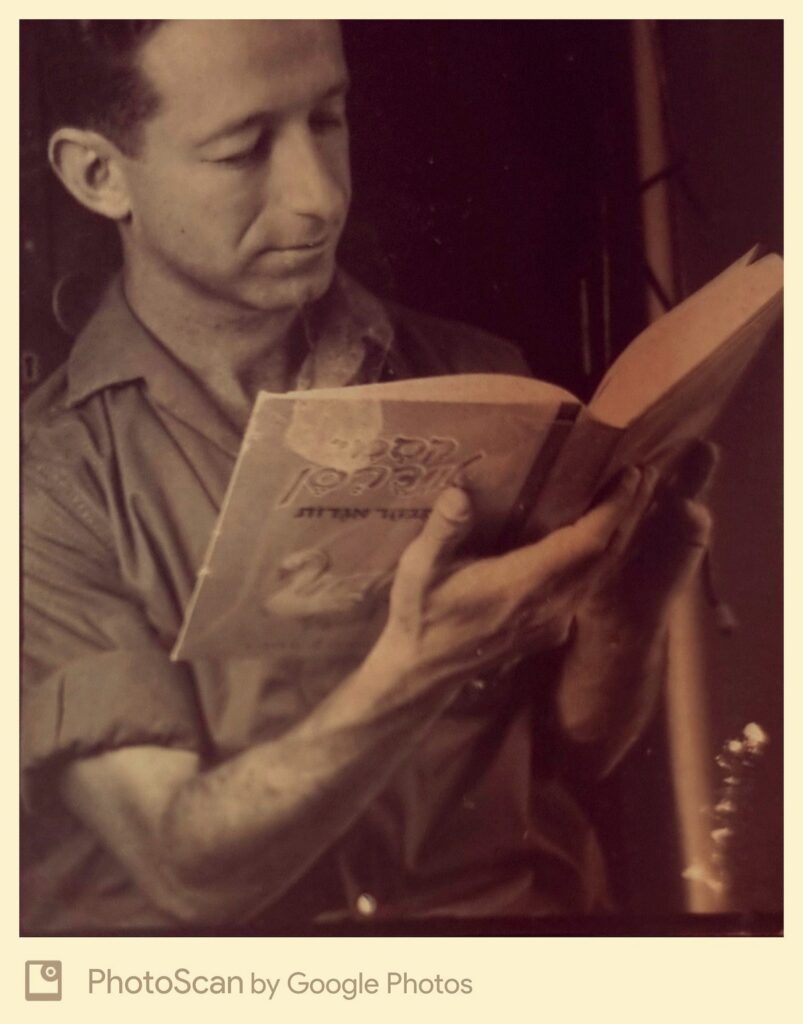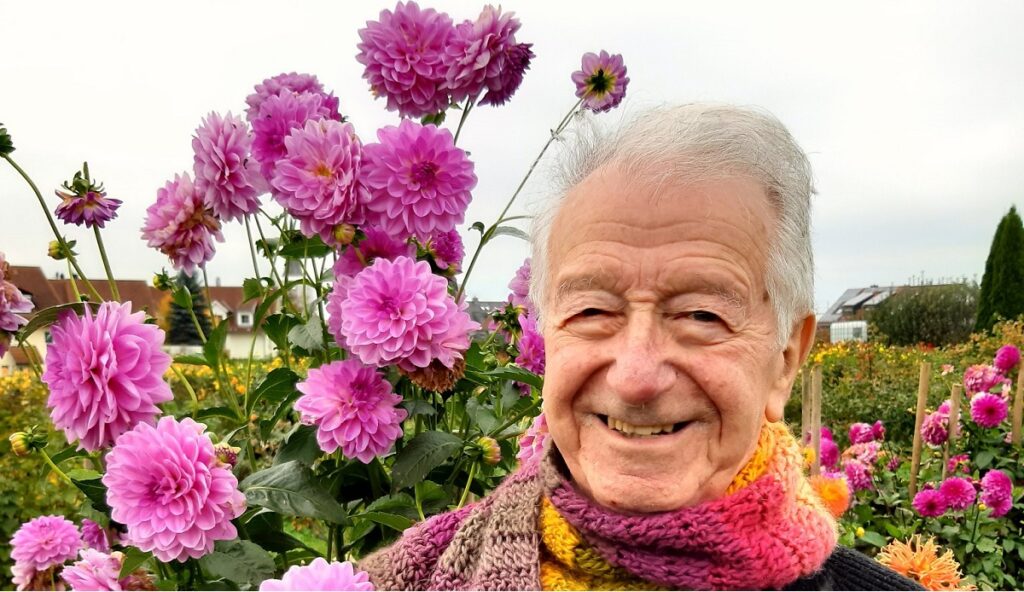On the first day of 2022, an 87-year old Holocaust survivor was filmed dancing with a group of students from Tel Aviv’s Arison Campus of The Arts. On the second day, that same survivor told an anti-vaxxed influencer via TikTok he was ashamed she could compare a COVID-19 vaccine mandate to a concentration camp.
The video of his emboldened response went viral on the popular video-sharing platform, with over six million views.
“Shame on you,” he snapped to comedian Carollynn Xavier, when she notified viewers she was “really excited to jump on this new trend” and have her “first day at unvaccinated camp” before whipping off a knit cap to reveal a shorn buzz cut. “Are you trying to look like a Holocaust survivor because you don’t want to be vaccinated? I was four years in a concentration camp,” he proclaimed. The survivor revealed his experience in a published memoir called “The True Adventures of Gidon Lev,” written by US-born writer and editor Julie Gray, who is now Lev’s partner.
After learning o his story, one would think that most of Lev’s TikTok videos – shot and posted by Gray – would be angry. They’re not. But the ones that grab some of the largest numbers also react powerfully to bouts of antisemitism, COVID-19 denial, and lack of Holocaust education. These videos, as well as many of the positive ones, have earned Lev unexpected popularity with over 260,000 followers and 3.7 million likes.
In the shadow of heightened antisemitism in the US, and increasing comparisons of COVID-19 measures to Nazi tactics, Lev has used TikTok as a platform to educate viewers around the world.
“Antisemitism was always there,” he tells NoCamels in a Zoom interview, “Technology has made it more obvious that it’s there and maybe that’s good because we can fight it. When you know that something bad is there, you can go out and fight it in many ways and that’s what Julie and I are also doing on TikTok. We went on TikTok first with the idea that we can sell more of our books, but it’s much more today.”
@thetrueadventures #learnontiktok #fyp #internationalholocaustremebranceday #shoah #history @israel @tiktok_israel
♬ Clocks – Adi Goldstein
The COVID-19 pandemic has kept much of the elderly confined to their homes. For Lev, TikTok has also become a platform to speak to the younger generation about the importance of remembering the Holocaust. During annual commemorations for the International Holocaust Remembrance Day, a day that marks the liberation of Auschwitz and commemorates Holocaust victims, Lev would often visit classrooms to speak about his experience in the Theresienstadt concentration camp in former Czechoslovakia. He was liberated when he was just 10 years old as one of 92 children who survived out of 15,000. This year, though, with the coronavirus pandemic still raging, he has appeared on Israel’s Channel 13, whipped up his mother’s favorite Czech dumplings for Zikaron B’Salon (Rememberance In The Living Room), and is doing a live Q&A with Tom Divon at @TikTok_Israel on Thursday at 12pm Eastern Daylight Time (7pm in Israel.)

Tom Divon is a media and culture researcher at Reichmann University (formerly Interdisciplinary Center, IDC) in Herzliya and a preliminary research student at the Hebrew University of Jerusalem. He studies memes and semiotics to examine the use of social media (particularly TikTok) to commemorate the Holocaust among fourth and fifth-generation users.
When he first started this particular research, Divon began to question how we can make Holocaust commemoration and education more accessible to young people and whether we should be outraged about selfies or the #POVchallenge, a trend in 2020 that saw teens masquerading as Holocaust victims to create role-play clips.
“Or do we see it as an opportunity?” Julie Gray asks, “I wrote about this in The True Adventures. I believe that we must be careful not to conflate ignorance or seeming disrespect of the Holocaust with outright antisemitism,” she tells NoCamels, “There is a fine line and obviously we can do better because more and more young people simply do not understand what happened or why.”

“This is our task,” she says of why she continues to help Lev keep up his TikTok page and why it’s important for them to update it every day.
Sign up for our free weekly newsletter
SubscribeSince Gidon has been on TikTok, Gray says the pair have been approached by numerous Jewish institutions about creating a volunteer program to connect young content creators with Holocaust survivors to help get them on social media as well.
“I think that once Gidon’s account showed that it was possible to have an engaging, meme-driven, viral account, the gates have opened to many more possibilities. Hopefully, this is just the beginning,” she adds.
Positivity prevails
When one gets the opportunity to chat with Gidon Lev, he will immediately be taken in by the octogenarian’s warm spirit, his charisma, and even his dance moves, which include tap (he taught himself, after making his own tap shoes out of scrap metal) and Israeli folk dance (he’s a teacher and taught folk dance classes in the army.)
It’s when hearing more of his life story that one realizes how special he truly is. Lev didn’t have a proper childhood. He was born in Karlovy Vary (Carlsbad) in 1935 not long after Hitler was elected Führer in Germany. His family fled to Prague when Hitler annexed the Sudetenland in 1938 and in 1941, the family was transported to the Theresienstadt ghetto and concentration camp. Lev was six years old. During the next four years, he watched hangings and beatings. He scrambled for food. He tried to play ball. He hid from soldiers.

“I had no childhood. I didn’t have playgrounds and school or anything. It was a time when — well, you know children don’t want to die. Children want to stay alive. That’s a very natural thing. And so us children were in this specific barracks, which was set up for women and small children up to 10 years old, was a place where we hardly ever could go out of there. It was closed up. And we tried to find some food in some way. We tried to find work of any kind that allowed us maybe a possibility to getting, finding, maybe even pinching another piece of bread or some jam from a barrel that they had given out that we scraped the inside. Things like that. And the fact is at times we even played ball, but we didn’t have real balls. What we did is we took old clothing, cut it into strips, and rolled it up into a ball. And for the next 15, 20, 30 minutes, it stayed as a ball, and then it fell apart, and then the game was over,” he explains.
The camp was liberated by the Red Army in May 1945. It took almost a year before Gidon and his mother, the only two surviving family members, discovered the fates of their loved ones. He lost his father, who died on a transport from Auschwitz to Buchenwald, and 26 other family members. While he focused on keeping himself busy, he moved to America and Canada, but eventually fulfilled a desire to make his life in Israel. Later, he moved to America and Canada but had a desire to make his life in Israel, which he eventually did in 1959 when he came to Kibbutz Hazorea in the Jezreel Valley. He taught folk dancing, became a dairy farmer, and had six children in total. But things weren’t always so idealistic. Eventually, he parted ways with his first wife and lost his second to cancer in 2012 after 40 years. He also battled cancer twice and survived.

“You’re not the first one to ask me this,” he quips when asked how he remains so positive with life’s sometimes traumatic circumstances, “I don’t know what it is. I just enjoy living and making the most of it. I’ve gone through so much and I’m that kind of guy.”
It might also explain his popularity on TikTok, which he also credits to Gray, a woman who helped him to personally and professionally explore life experiences he had never had the courage to examine before. He calls it a “spark” and says he feels closer to Gray than he has to anyone ever before. The pair are still together, living in Ramat Gan, four and a half years later.
Gray, for her part, is not so quick to take all the credit. She, too, found it easy to be drawn to the man who goes through life with a pep in his step and a smile on his face. “Gidon and I wanted to gain more exposure to our book. So we had no intentions outside of that. But because Gidon is who he is – a bit of a ham, a dancer, a charismatic character, he didn’t want to just answer questions about his life, he was willing to try out some of the memes that drive TikTok.”
“Get ready to meet the most charismatic man ever!” she exclaims.
Related posts

Rehabilitation Nation: Israeli Innovation On Road To Healing

Israeli High-Tech Sector 'Still Good' Despite Year Of War





Facebook comments